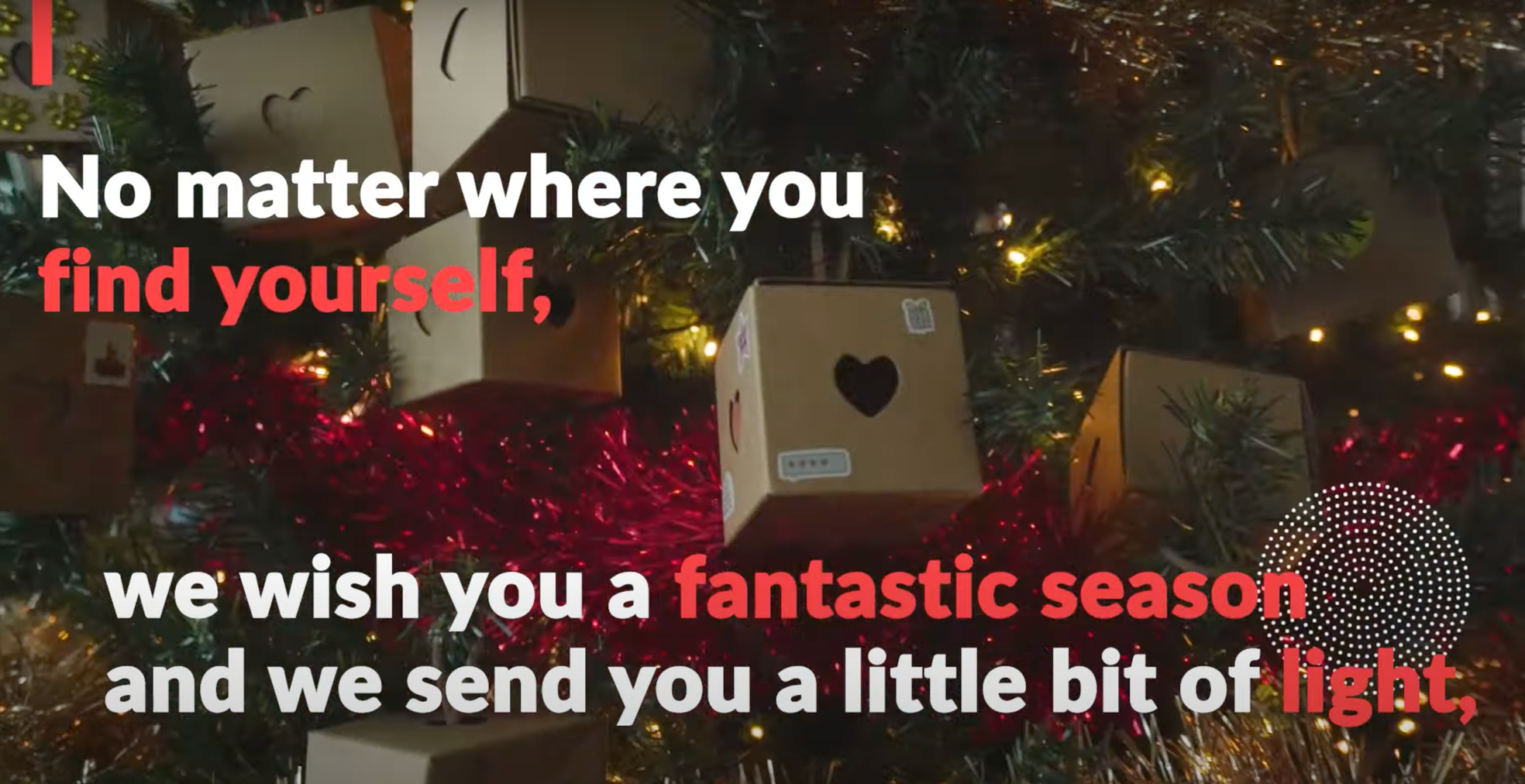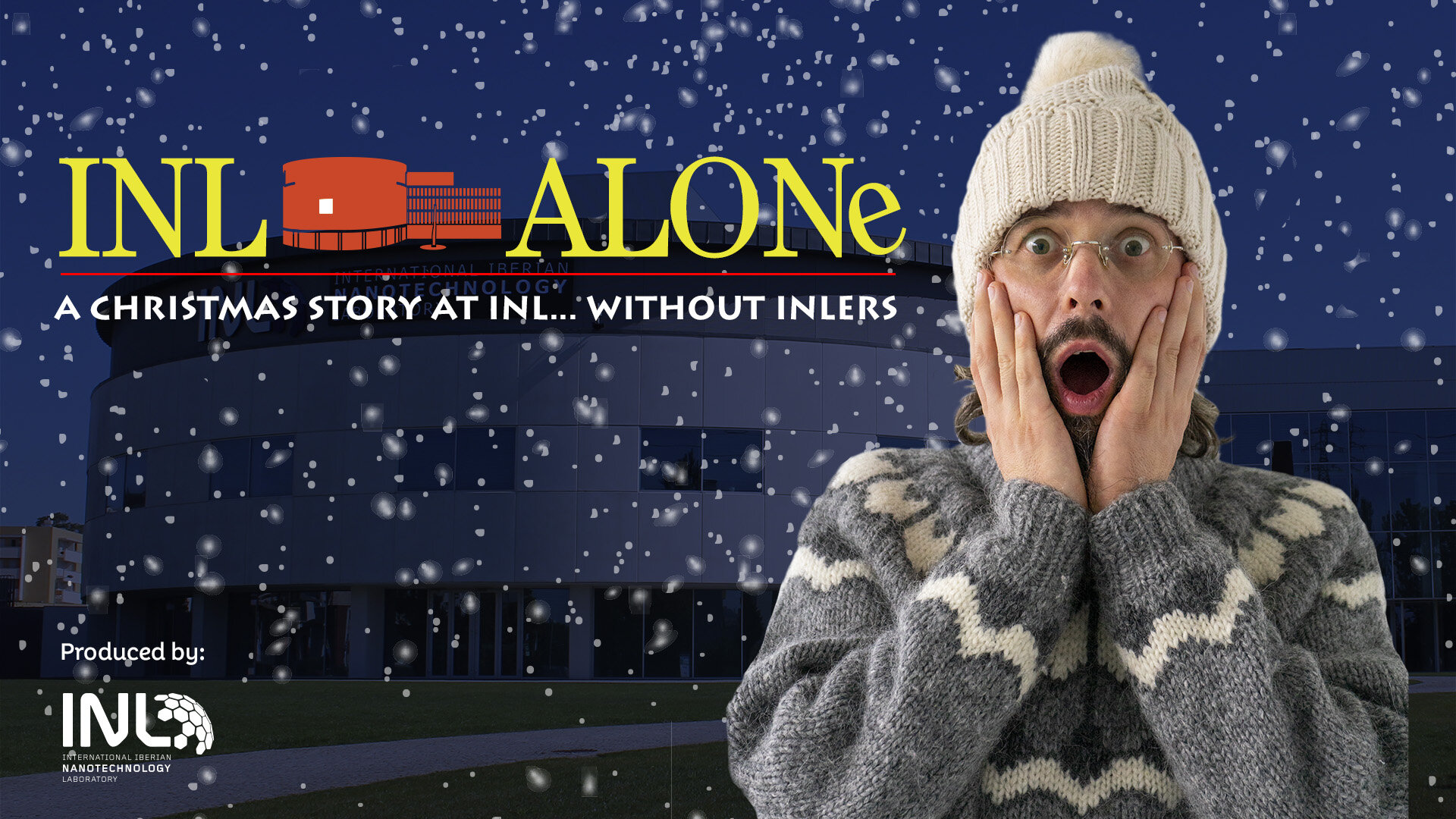
Meet the “Happy Holidays | INL ALONe” star, Alar Ainla – Staff Researcher at INL
December 22, 2020
Christmas is just around the corner and this year our ‘Happy Holidays | INL ALONe’ video reminds us of the hard year we had but at the same time highlights the importance of community and union.
We may not be together, but being physically apart does not mean we are alone. One way or another, we are all in this together – in our minds, in our hearts, in our homes. And this video would not have been possible without our amazing star – Alar Ainla. Today, we shine a spotlight on this amazing colleague and… now a unique actor.
Alar is a staff researcher at INL, Microfabrication, and Exploratory Nanotechnology research group, where his research is focused on the developments of integrated sensors and sensing systems.
Hi Alar! Can you tell us a bit about yourself, your career path, and your adventure here in Portugal?
I come from a little nordic country, Estonia. I lived, studied, and worked for a long period of time in Sweden, and in the United States before arriving here in Portugal.
About my adventures in Portugal … mostly they have happened here at INL or nearby. One of my special favorite adventure destinations is the Parque Nacional Peneda-Gerês. I really love and enjoy nature and Peneda-Gerês is a really special place. Whether in- or outside of INL these adventures are often shared with other INLers. So just like the movie my “INL family”, which is very important to me while living in Portugal!
Acting requires that fearlessness. Why have you decided to accept the CCM Unit invitation?
I think fearlessness is a strong word – almost inhumane, perhaps there are different things and situations, that may kick the adrenaline over limits for different people. You ask “why?” I ask “why not?”
Usually, I don’t refuse invitations, unless I am simply running out of time or cannot make it somehow. But when it’s something creative, a bit unconventional, for a good cause, and perhaps even a little crazy I am totally in!
I must say that at first, I didn’t imagine the film very well and how it was going to be like. Also, I don’t have any special emotional connection with the original movie (I barely remembered it. And it is probably more iconic here than in Estonia). But there were two important sides appealing to me: first filmmaking in itself can be fun (I have had some experience with it), but secondly it also had a much deeper symbolic meaning for me, which is related to the fact that this year is a different year together due to COVID-19 with and the “alone” factor. I was home alone, like many people, for a long time during this Spring, not seeing anyone, and it was quite a terrible and hard experience psychologically. So the story is actually really meaningful, symbolic, and beautiful, as fortunately, I found my INL family at the end there. The more I read the script and the more I thought about it, the more amazed I became how nice the story was … so, of course, I was happy to be part of it!
Did you enjoy this experience?
Absolutely! I loved it!
Why? We had a really amazing filmmaking team. We had action, we had creativity and we had a little crazy activity together. I am happy that you like the end result, but for me, the process of making it was already a win even before I saw anything on the screen.
The cherry on the top of the cake was the sledding at INL. As a Nordic person, I have some sentimental feelings about sleds and in fact, this was the first time I used one in Portugal! In a very unconventional way (don’t do it at home, please!!!). Sadly, in recent years, sledding has not been possible even in Nordic countries – a sad reminder of the climate challenges the World is facing currently!
Do you think there’s room for creativity and fun in Science? Do you think it helps in the development of your work?
If there wouldn’t be any creativity and fun in science, I wouldn’t do it! Luckily there is quite a lot.
Unfortunately, I think there are also some stereotypes, which are trying to contrast and split artistic creativity and science, into mutually exclusive and incompatible worlds. I personally have a very different view, for me, both arts and sciences are activities natural to humans, their outcomes are for humans and as they come with a slightly different angle, to touch our analytical and emotional sides of brains, holistically they would work much better together, than either alone. So in short “yes!!!!”. In many different ways and different artistic and creative activities can help scientists, science, and how we communicate!
Can you tell us how’s Christmas in Estonia? Maybe you can share a recipe or a tradition with our audience.
In Estonia and other Nordic countries, Christmas is very much a home and family holiday. In these countries, it’s quite dark really and days are really short, so people are more at home enjoying their time by lighting lights and candles, playing games and baking.
During Christmas time we have recipes and different dishes and I would share with you all a typical Nordic Christmas food: gingerbread cookies (In Estonian we say: “piparkoogid”, and in Swedish: “pepparkakor”):
You’ll need:
-
500g dark syrup (Dansukker)
-
340g sugar (preferred is non-refined, yellow)
-
500g butter
-
4 eggs
-
1.2kg flour (wheat)
-
20g baking powder
-
Spice mixture: 30g ground (powder) cinnamon, 10g ground (powder) ginger, 10g ground (powder) gloves, 30g ground (powder) cardamom
I prepare it the following way: take 300g sugar (white or yellow) add a bit of water in a pot and heat until molten, cook to caramelize, look until the dark golden brown color of mountain honey, then add 200g dark brown sugar (that is available) and some more water, stir until molten.
The consistency is similar to honey. Now add the mixture of spices and sugar and pieces of butter to the hot syrup. Stir well until it is completely homogeneous. Switch off the fire and let it cool a bit. Then gradually add the eggs, while mixing it well.
In a separate bowl mix the flour and baking powder and then add the flour mixture gradually to the liquid part. Mix and knit well with your hands. Place it in a plastic wrap and let it rest in the fridge for at least 24h.
On the following day, roll out and cut into shapes with a knife or cookie forms. Bake it at 200ºC in the oven for about 6 to 9min.
Decoration
Mix 1 egg white with 3-4 spoons of white sugar powder until it is a shiny white paste. If you have, can add culinary citric acid (powder), which gives it a nice sour taste and makes it also stronger (lemon juice might work too, but it is watery, you don’t want the mix to be too liquid) . You can also use food colorants to give color. Place the mixture in a food bag/plastic bag (different colors in different bags), open a small hole and you can start decorating the cookies. You can also use a small medical syringe (available in the local pharmacy). Let it dry or bake softly at low heat like 50º-60ºC. Avoid baking at too high temperatures, that will make the glazing to melt and go brown!
These cookies go really well with typical hot mulled wine (EE: “hõõgvein”, SE: glögg”). Enjoy!
Thank you Alar Ainla, for making this a memorable moment!
You can re-watch our video by clicking below!







